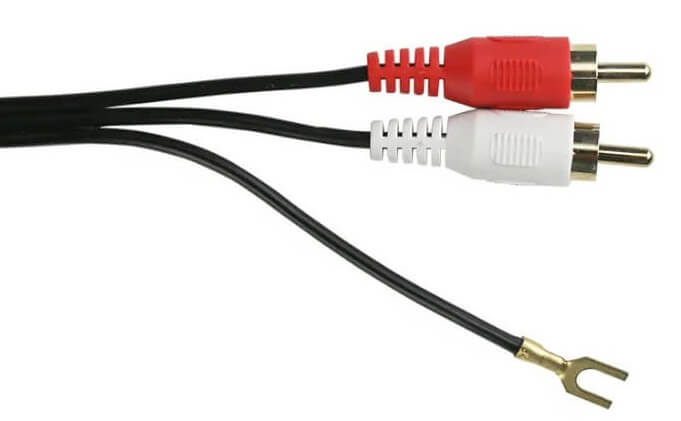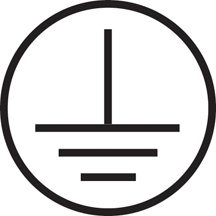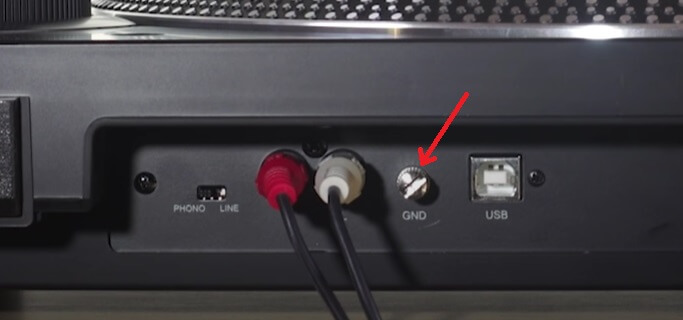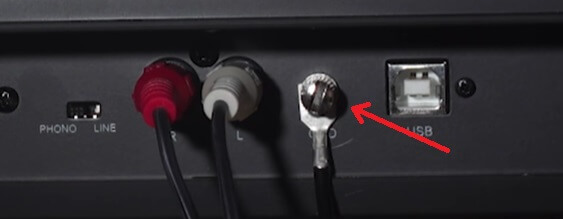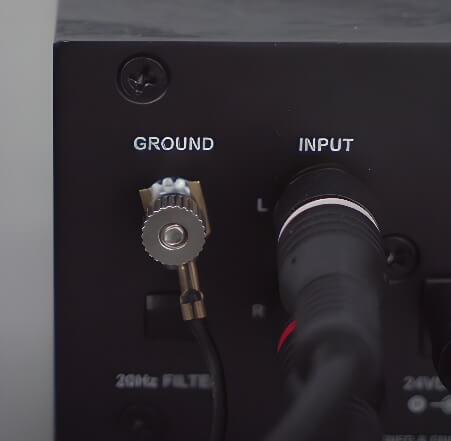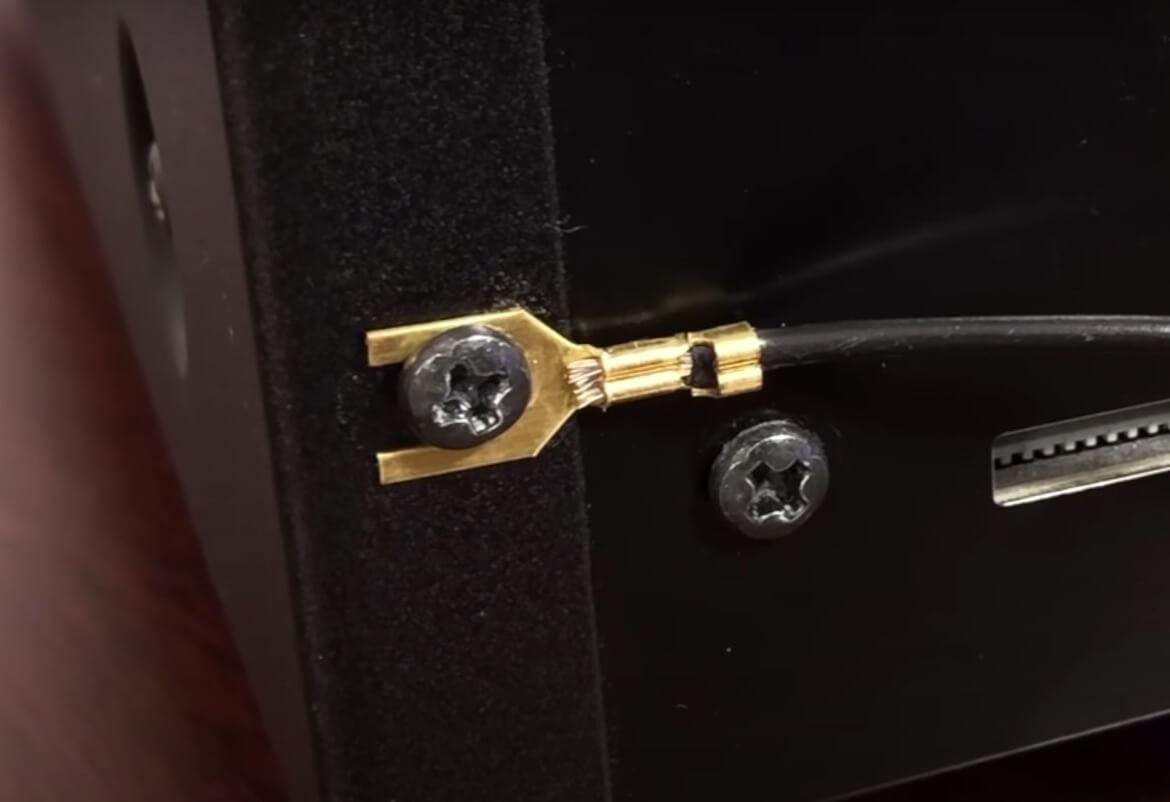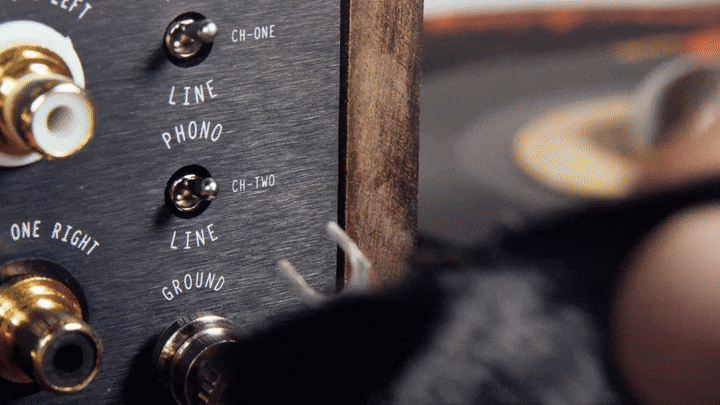Are you getting a humming and buzzing sound from your turntable? If yes, then you are facing a ground loop problem and all you need to do is to ground your turntable properly.
I know, grounding a turntable sounds very complex but in reality, it is very simple.
When I faced this issue first time as a beginning, I did a lot of research online but I was not able to find the exact solution according to my turntable setup which confused me a lot and took me a lot of time to fix the ground loop.
So, learning from experience and assuring that you don’t have to go through the struggle to find the method, I have drafted this article according to different turntable setups and all you need to do is find your turntable setup and follow the grounding process mentioned there.
But before proceeding further, let’s discuss why grounding is important for your turntable.
Why Grounding Is Important In Turntables?
Grounding the turntable is one of the most important parts of turntable setup which you should never ignore. To understand the importance of grounding, you should first learn about phono and line signals.
As you know, there are many types of cartridges but most of the turntables come with one of the 2 popular cartridges in the market i.e. moving magnet and moving coil cartridges.
These cartridges generate electric signals that are in very low volts and need to be amplified by a phono preamp to a level accepted by the line input of powered amps or powered speakers.
As we have discussed in the phono and line signals article, the cartridge’s output signals at 0.0003 V to 0.006 V level (depending on the cartridge type) while the stereo receivers, powered amps, or powered speakers need these signals at standardized 0.316V which means the amplifiers amplify the low-level output from the turntable by multiple Xs.
While amplifying the low-level sound signals, the electrical interference and noise also get amplified by the preamp first and then the receiver.
These amplified noises or excess electric charge cause the humming sound on speakers.
To remove the humming sound of these excess electric charges and noises, we need to ground or earth these excess electric charges so that only sound signals are sent for the amplification process.
Now, let’s proceed further and talk about the grounding process.
How to Ground a Turntable:
Well, the grounding method depends on the type of turntable setup you are using. Mostly, I have seen people sharing the grounding method with phono preamp only which creates a lot of confusion among people who use turntables with an in-built preamp with the receiver or directly with active speakers.
So, I have drafted this article most conveniently so the users can match their turntable setup and find the grounding steps for their setup only.
Now, I am going to list all turntable setups:
Types of Turntable Setup:
- Turntable -> External Phono Preamp -> Receiver or Amplifier -> Passive Speakers
- Turntable -> Receiver or Amplifier with Built-in Phono Preamp -> Passive Speakers
- Turntable with Built-in Preamp -> Receiver or Amplifier -> Passive Speakers
- Turntable with Built-in Preamp -> Active or Powered Speakers
Setup 1: Turntable -> External Phono Preamp -> Receiver/Amplifier -> Passive Speakers
Note: If your turntable has a built-in preamp, you need to disengage it by switching the phono/line switch to the line.
In this setup, your turntable is outputting the signals at the phono level and your external phono preamp applies the RIAA curve and amplifies the signals to 0.316V, i.e., making it suitable or compatible for line inputs of the receiver or amplifier. After that, the amplifier or receiver amplifies the signals further and sends them to passive speakers.
Here, you need to ground your turntable with a phono preamp.
How to Ground a Turntable With Phono Preamp:
1) Turn off the turntable and unplug it from the power source.
2) You should have received an RCA cable with a ground wire along with your turntable. In some turntables, you will find a separate ground wire underneath the chassis of the turntable which is already connected to the chassis.
Now, locate the ground lug on the backside of your turntable. You will see either “GND” or “Ground” on top of the lug or you can also see this universal grounding logo or symbol.
Grounding Universal Logo or Symbol:
Turntable Backside:
3) Loosen up the screw and insert the grounding wire fork spade wire connector in-between the space of the screw and terminal. Now, tighten the screw. This is how you can connect the ground wire to the turntable.
4) Now, check the backside of your phono preamp. You will also find a ground lug. So now, you need to take the other end of the ground wire and connect it to the phono preamp ground lug. For doing so, you need to loosen up the screw and place the grounding wire fork spade wire connector in-between the space of the screw and terminal and after that, tighten the screw as far as you can go.
That’s it. You have successfully grounded your turntable with phono preamp.
Setup 2: Turntable -> Receiver or Amplifier with Built-in Phono Preamp -> Passive Speakers
Note: If your turntable has a built-in preamp, you need to disengage it by switching the phono/line switch to the line.
In this setup, your turntable outputs the signals at the phono level and your receiver or amplifier which has an in-built phone stage first amplifies the phono signals to 0.316V and after that, normal signal amplification is done. Once the amplification process is done, the amplifier or receiver sends them to passive speakers.
Here, you need to ground the turntable to the receiver or power amp/amplifier.
How to Ground a Turntable With Receiver or Power Amplifier Having Built-in Preamp:
1) Turn off the turntable and unplug it from the power source.
2) You should have received an RCA cable with a ground wire along with your turntable. In some turntables, you will find a separate ground wire underneath the chassis of the turntable which is already connected to the chassis.
Now, locate the ground lug on the backside of your turntable. You will see either “GND” or “Ground” on top of the lug or you can also see this universal grounding logo or symbol.
Grounding Universal Logo or Symbol:
Turntable Backside:
3) Loosen up the screw and insert the grounding wire fork spade wire connector in-between the space of the screw and terminal. Now, tighten the screw.
4) Now, check the backside of your receiver or amp. There can be 2 cases here, your powered amp might have a ground lug or might not.
Case 1: Ground Lug Exists
If you found a ground lug at the backside of your receiver or amp then you need to loosen up the post screw and place the grounding wire fork spade wire connector in-between the space of the post screw and terminal and tighten the screw as far as you can go.
Case 2: Ground Lug Doesn’t Exist
Method 1:
In this case, you need to take the other end of the ground wire and connect it to the chassis of the amplifier. For doing so, you need to loosen up any screw at the backside of your stereo receiver or amp which is connected to the chassis. Place the grounding wire fork spade wire connector in-between the space of the screw and the receiver’s chassis and tighten it.
Method 2:
In this case, you will need gaffer tape. Simply, place the grounding wire fork spade wire connector on the backside of the receiver and tape it with gaffer tape. Make sure, the wire is not loose.
From both these solutions, I recommend you apply the first one because it will last longer.
That’s it. You have successfully grounded your turntable with the receiver.
Setup 3: Turntable with Built-in Preamp -> Receiver or Amplifier -> Passive Speakers
Note: You must engage your in-built preamp by switching the Phone/Line switch to Line.
In this setup, your turntable outputs the signals at the line level which means that the signals are already at 0.316V. So, the amplifier or receiver amplifies the signals further and sends them to passive speakers.
In most cases, you might not require the grounding or earthing here because the turntable is handling the grounding on its own but if you are still getting the humming sound then you can simply ground your turntable with the receiver or powered amp following the steps mentioned in setup 2.
Setup 4: Turntable with Built-in Preamp -> Active or Powered Speakers
Note: You must engage your in-built preamp by switching the Phone/Line switch to Line.
In this setup, your turntable outputs the signals at the line level which means that the signals are already at 0.316V and as you are using active/power speakers that already have an in-built amplifier, the output from the turntable is directly transmitted to the power speakers and these speakers handle the signals further on its own.
You don’t need to ground your turntable here because the turntable is handling the grounding on its own.
Well, I have explained turntable grounding in all the possible turntable setups but still, some cases require their explanation. So now, I am going to explain some unexpected issues that you might face while grounding the turntable.
Turntable Ground Issues:
Now, we are going to list some common issues that you may face while grounding your turntable and their solution.
1) The turntable has no Ground Wire but has a Ground Lug at the Backside:
In this case, you need to either buy one or create one.
DIY: Create Turntable Grounding Wire At Home
Here are the things required to make a grounding wire.
- 18-22 gauge stranded wire (small wire)
- Fork spade wire connector
Steps:
1) Measure the distance between your turntable and the device you are trying to ground it with. Also, make sure that the distance between the devices is not more than 5 feet.
2) Use a wire stripper or needle-nose pliers and remove around 10mm isolation from both ends of the wire.
3) Take the fork spade wire connector and connect it at both ends.
That’s it. You have successfully created a turntable grounding wire yourself.
2) The turntable has no ground lug or terminal
If your turntable doesn’t have a ground lug or terminal at the back then you don’t need to worry about grounding it because the manufacturer has already handled the earthing part.
They are using the internal grounding method through which they are sending the ground through the audio cables. Mostly, this internal grounding process is implemented in DJ turntables.
For example: You can take a look at the Rega Planar 1 as this turntable doesn’t have a ground lug.
But, if you still have ground issues with it then you can follow the method below:
How to Fix Hum on Turntable That Has no Ground Lug:
Note: A friend has shared this solution with us and he has fixed the humming sound on this Rega planar 1 turntable by following this method.
1) Take a grounding wire or an 18-22 gauge stranded wire and connect it to the ground lug on your phono preamp.
2) Now, take the other end of the ground wire and connect it to the ground lug of the receiver or the chassis of the receiver.
That’s it. This will fix the issues on your Rega Planar 1 turntable.
3) Grounding is Done Perfectly But Still Humming Sound is Coming
Here are some points through which the issue can arise:
i) Dirty, Oxidized or Corroded Terminals/Lug or Wire Connectors
Check whether the wires, wire connectors, terminals, or lugs are clean. If not then clean them right away.
ii) Twisted or Tangled Ground Wire
The twisted or tangled ground wire can reduce the effectiveness of grounding. So, arrange the wires in the straight and cleanest way possible.
iii) Grounding Wire Length
The recommended wire length is around 5 feet. So, check if it is longer than 5 feet then try placing the equipment closer to each other and cut off the extra wire.
iv) Restrict Wire Touching Other Metal objects or Wires
If your ground wire is touching the other metal objects or tangled with other wires then I recommend you to rearrange the wire and make sure, it is not touching anything.
v) Plug your Turntable Directly into an AC Power Outlet
Remove any power bars or surge protector and plug your turntable power code directly into the AC power outlet.
So, these are some turntable grounding issues that you might face while setting up your turntable.
Well, there is one more method of grounding a turntable i.e. internal grounding. Now, I am going to explain the turntable internal grounding method.
How to Ground Turntable Internally (Internal Grounding):
This method is used by many turntable manufacturers which removes the whole external grounding process. I am attaching a video tutorial for this.
Note: I am attaching this method for knowledge purposes only. I won’t recommend anyone to follow this method because first of all, your brand’s warranty will void and secondly, you can damage your turntable into non-repairable condition. So, if you want to try this then try it at your own risk.
Frequently Asked Questions:
Q1- Does a turntable need to be grounded?
Yes, grounding a turntable is a very important process and shouldn’t be ignored in any circumstances.
Q2- What happens if I don’t ground my turntable?
In case, you don’t ground your turntable then get ready to face the ground loop problems and a continuous hum while listening to vinyl records. On top of that, the chances of getting an electric shock from your turntable setup increases.
Q3- When should you ground a turntable?
Well, the grounding process should be part of the turntable setup process.
For example: when you are setting up your turntable like connecting the turntable to a phono preamp, amplifier, or speakers, you should also follow the grounding process side by side.
Q4- Can you connect 2 ground wires together?
No, it is always recommended to have only 1 ground wire connected to a single ground lug. Although, you don’t need to use 2 ground wires in any case.
Q5- What happens if two ground wires touch?
Most of the time, there won’t be any issues but I have seen people’s efforts of grounding nullified when their ground wire touches or gets tangled with other wires or touches any metal part.
So, I recommend you use cable management tools and prevent your wires from getting tangled.
I hope this article has taught you how to ground turntable. If you are still facing issues while grounding then feel free to comment below. We will get back to you as soon as possible.

